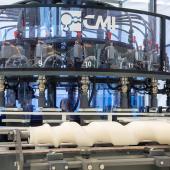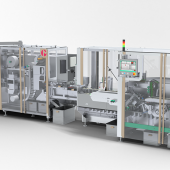How to correct or eliminate the resonance frequencies

THE EXPERT REPLIES Processing automation, energy, timed cams, open and modular automation architecture, soft automation, service: in the column on ItaliaImballaggio called “The expert replies”, Packaging and Processing Bosch Rexroth Italia will provide answers for the specific problems that the readers will tell them about. Write to [email protected]
Question
Good afternoon. For some years now, we've been purchasing machines and systems with servo drives for our production plant, to guarantee higher performance levels and greater format change flexibility. We've noticed however, that in certain working conditions, the system vibrates in a tiresome manner. Can this problem be solved? Signed A.A.
Vibrations in automatic machines are a fairly frequent problem; oscillations and vibrations that have a negative effect on the speed and accuracy of the process, and can even cause mechanical damage.
Mechanical resonance is the phenomenon whereby a system responds to a speed/position command with specific variation frequency by extending its oscillating behaviour to cover the excitation frequency.
The resonance frequencies of a mechanical or mechatronic system are part of its intrinsic characteristics (linked to the interaction of all the components), including those relating to the rigidity and play of the entire kinematic chain. Unlike a mechanical drive, an electrical axis drive offers the possibility to correct, limit and often eliminate the negative effects of the system resonance frequencies by adjusting and calibrating the axis, but only if those frequencies are known!
The traditional way of analysing vibrations involves determining the resonance frequencies, either with virtual mathematical analysis systems or with the aid of external sensors (e.g. accelerometers), plus additional management software packages. The processed data then have to be analysed by the mechanical design team, who come up with solutions (though often with a non-scientific approach) aimed at modifying the rigidity of the entire drive transmission chain.
Apart from mathematical analysis (often over-complicated and imprecise), the use of sensors and external processing is generally disliked because it's sometimes difficult to implement and always involves the use of additional systems and software packages.
With the aim of reducing the effects caused by resonance frequencies, Bosch Rexroth has developed specific resonance analysis and processing functions, available on all the servo drives of the IndraDrive range.
The servomotor acts as a measurement sensor, while the servo drive is the processing element.
How are the effects reduced? Via three phases:
• Identification of the resonance and anti-resonance frequencies: this information is detected by sending a ‘white noise’ to the motor, i.e. a torque command of predefined magnitude, with a variable frequency chosen from within the adjustment band. This test triggers vibrations on the mechanics (some with clearly audible frequencies). The effect can be compared with that of ‘hitting’ the mechanics with a hammer, to check whether the response generates a vibration of greater magnitude than the excitation signal. Via the integrated oscilloscope (sampling up to 500 microseconds), the samples obtained are processed by the IndraWorks development suite using a frequency analysis (FFT) that produces graphics for the magnitude and phase response (Bode diagram) of the mechatronic system.
• Attenuation of the resonance frequency effects: via the activation of digital filters (even several filters, simultaneously) on the drive control ring. By activating the filters and repeating the ‘white noise’ test, you can immediately verify the improvement.
• Optimisation of the axis adjustment: once the system frequency response has been corrected, you can optimise the axis adjustment by correcting the ring play so as to optimise the response and error in the execution of a commanded movement law (tracking error).
For further information www.boschrexroth.it

















